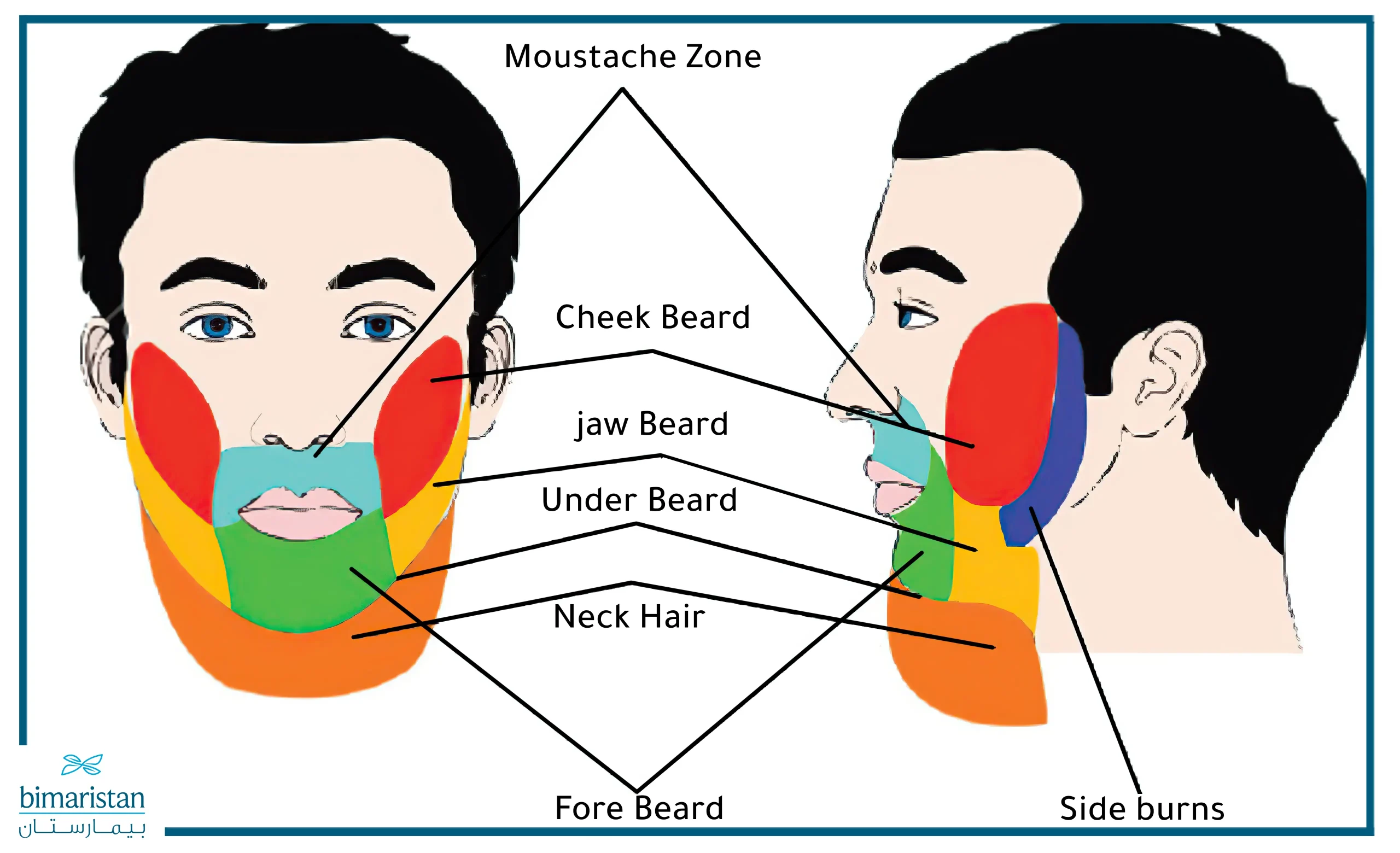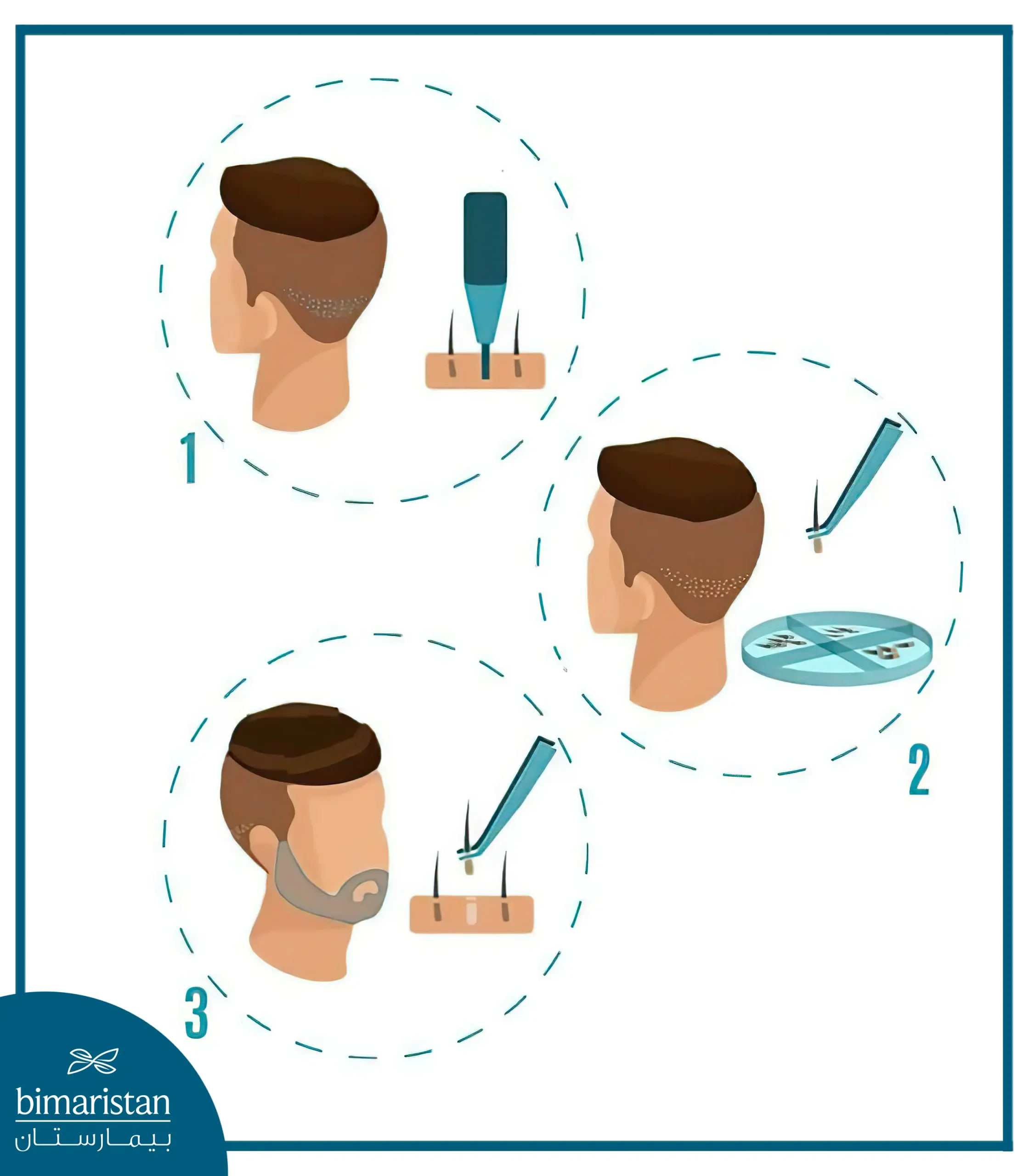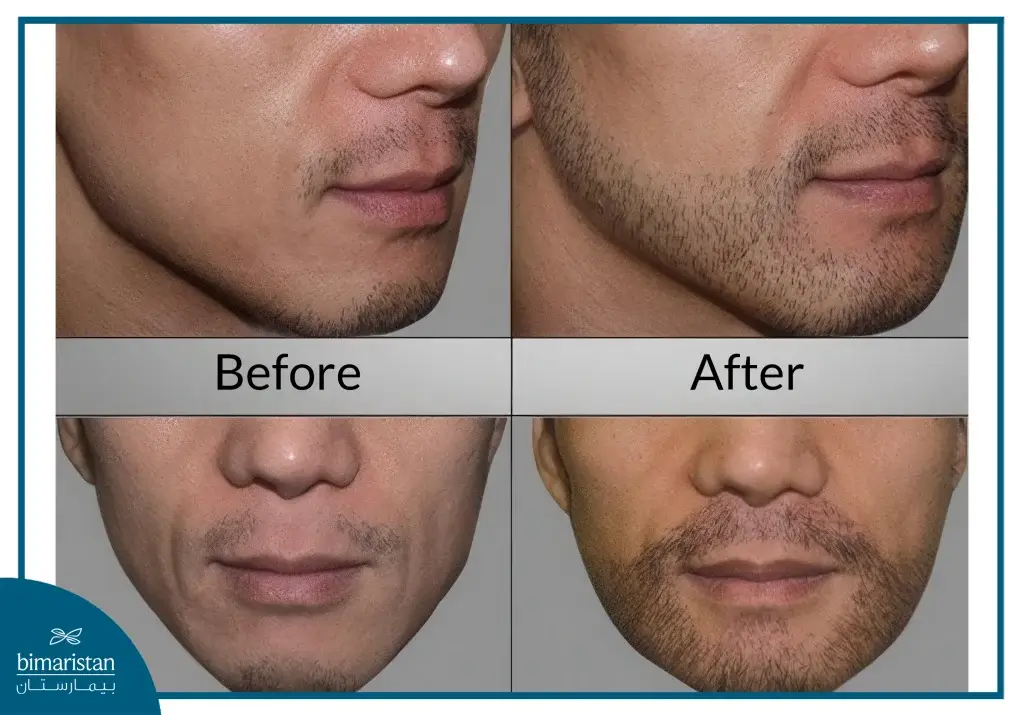A beard enhances a man’s attractiveness and handsomeness. Beard hair transplant surgery is considered one of the most common hair transplant procedures among men and one of the most frequently performed procedures at the Bimaristan Center.
A beard hair transplant is a surgical procedure that transfers natural hair to the chin area to improve facial appearance and increase its attractiveness. This procedure is popular among men who suffer from insufficient hair growth in the beard area or who wish to increase the density of their beard in that region.
Beards are one of the few things that beautify a man’s face, enhancing his masculinity and providing him with the confidence that every man wants to show. Therefore, beard and mustache transplant surgeries should be considered procedures that require expert hands to achieve the desired appearance.
Who is a candidate for beard hair transplant surgery?
Beard hair transplant surgery is not performed on everyone who lacks a beard. Medications might be the answer for some reasons for the absence of beard growth, so surgery should be avoided in such cases. The first step in determining whether a beard and mustache transplant is necessary is to visit a doctor to identify the cause of the lack of beard growth.
Candidates for beard hair transplant surgery:
- Patients who do not suffer from conditions that may affect the course of the procedure, such as diabetes or scalp infections of various causes.
- Patients with dense donor areas and healthy hair follicles.
- For patients who have suffered burns or injuries to the face, beard transplantation may help regenerate the damaged area.
- Patients who experience a lack of hair density or even no hair growth in specific face areas due to genetic reasons.
- Patients who are in good overall health prior to the transplant procedure, as any underlying health issues, could impact the results of the surgery or increase risks.
Causes of Sparse Beard Hair
- Genetics is one of the primary causes of sparse beard hair, which usually becomes apparent after age twenty. A medical history can confirm this.
- Hormones, particularly androgens, play an essential role in beard growth. However, as mentioned, androgens can also contribute to scalp hair loss, which is considered a double-edged sword in hair health.
- Alopecia areata causes hair loss and is often treated with corticosteroids. However, some resistant forms of the condition may require beard hair transplantation.
Reasons for undergoing beard and mustache transplant surgery
- Facial scarring: Scars that prevent hair from growing can be covered by beard transplantation.
- Chronic tweezing: Frequent tweezing of the beard may damage the hair follicles, preventing hair from growing back.
- Chronic alopecia areata: Long-term alopecia that does not respond to treatment may necessitate a beard transplant.
- Congenital lack of beard hair: Some men are born with little or no beard hair, which may require hair transplant surgery.
Procedure for beard hair transplant surgery
Generally, beard hair transplant surgery is similar to hair transplant surgery, though there are some differences due to the distinct characteristics of beard hair compared to scalp hair.
Differences between beard hair and scalp hair
The root of beard hair is slightly larger than that of scalp hair, and the hair shaft is thicker. Beard hair begins to grow after puberty and continues developing until around the age of 30 under the influence of androgens. In contrast, scalp hair may fall out due to androgens, leading to androgenic alopecia.
Dividing the chin before transplantation
Before starting the beard hair transplant procedure, the chin is divided into several regions:
Lateral areas (side regions):
- In front of the ear
- The cheek (the most crucial lateral area)
- Jawline
- Below the lower jaw
Front regions:
- The mustache area
- The area below the lower lip
these regions are more important than the side areas and should have higher hair density.

Beard hair transplant surgery takes several hours to complete. It is performed under local anesthesia, and precise instruments implant hair follicles into the chin area.
Read more about: Hair Transplant in Turkey.
What to do before beard hair transplant surgery
Before considering the surgery, a detailed medical history is taken, along with an anatomical examination of the chin area and an assessment of the donor hair to be used.
The patient is also asked about any previous bleeding history or underlying conditions such as diabetes and hypertension, and any allergies are assessed before proceeding with local anesthesia.
Local anesthesia in beard hair transplant surgery
Anesthesia of the chin area is much more complicated than the scalp due to the numerous nerves that innervate the region. The nerves that are anesthetized are:
- Auriculotemporal nerve: Innervates the skin above the parotid gland and the external ear.
- Infraorbital nerve: Innervates the area beneath the orbit (eye), upper lip, and mustache region.
- Mental nerve: Innervates the lower lip and chin area.
- Long buccal Nerve: Innervates the cheek region.
- Finally, local anesthesia is administered to the skin by injecting the anesthetic deeply into the dermis beneath the skin.
Hair harvesting
After shaving the hair and administering local anesthesia to the donor area, hair harvesting is performed, usually from the area at the back of the head, using the same technique used in hair restoration procedures for the scalp. This is done either through the FUT (Follicular Unit Transplantation) technique or the FUE (Follicular Unit Extraction) technique. Most doctors prefer using the FUE technique as it does not leave visible scars.
In the FUE technique, hair follicles are harvested individually using a specialized tool. In the FUT technique, a strip of skin is taken from the back of the head and transplanted to the chin.

Hair transplantation in the chin area
The area is anesthetized, and then surgical incisions of 0.8 mm or 0.9 mm in length are made according to the number of follicles to be implanted. These incisions are made to place the hair follicles.
The hair is transplanted in a specific pattern, with the hair follicles directed downward. Additionally, the density in the upper area should be higher than in the lower regions to avoid any differences in density. This is due to the overlap of hair resulting from the downward direction of the hair, which increases hair density in the lower regions.
Hair transplantation in the chin is more challenging than in the scalp because of the skin’s elasticity and ability to move freely. The blood supply in this area is significant, which increases the likelihood of bleeding. However, the best doctors with extensive experience in this field are present at the Bimaristan Medical Center, which reduces the potential for complications related to the procedure.

What to do after beard hair transplant surgery
The patient may experience numbness and tingling in the chin area, leading to difficulty chewing food. Therefore, it is recommended that liquid and semi-solid foods be provided for the first one or two days.
Keep the chin area moist for the first five days to reduce the formation of scabs. Then, antibiotics and pain relievers will be administered for one week.
Cold compresses and pain relievers can be used after the surgery if you experience pain. It is important to note that the surgery itself is not painful, as it is done under local anesthesia. However, mild discomfort may last a few days after the anesthesia wears off.
Resist the urge to scratch. This is a widespread side effect after beard transplantation, and it can occur in both the donor and recipient areas.
Avoid washing your face for the first 24 hours. After that, you can wash your face and head safely unless otherwise instructed by your doctor.
Gently massage the treated skin with your fingertips without rubbing, allowing the scabs to come off naturally.
Do not shave the recipient area for at least one month. The donor area can be shaved after one week, but it is best to avoid shaving for several weeks.
Sleeping Position: Like scalp hair transplant surgery, beard implants require patients to rest upright and avoid pressing their face on the pillow. Sleeping with the head elevated helps reduce swelling and minimizes the risk of bleeding. Use two or three pillows for added support.
Complications of beard hair transplant surgery
Chin transplant surgery is one of the simplest facial hair implants that generally does not lead to many complications. However, some complications may occur after the procedure, including:
- Swelling or skin irregularities may occur in the transplanted area, especially in the front section.
- Infection is why antibiotics are given for one week post-surgery to prevent infection.
- Improper hair direction can result in an undesirable appearance of the chin.
However, with advancements in facial hair transplant procedures and the expertise of the doctors at Bimaristan Center, the risk of such complications has been minimized.
The clinical diagnosis of the reason for hair non-growth is the foundation for taking additional steps. It determines the appropriate method for promoting beard growth or performing a beard transplant. At this point, the doctor decides on the process for the beard hair transplant and explains to the patient how the procedure will be carried out and what needs to be done before and after the surgery. Bimaristan Center in Turkey has experienced doctors specializing in beard hair transplant to ensure the best possible results.
References:
- HAIR TRANSPLANT INTERNATIONAL.
- Beard Reconstruction. Ummer Yaseen, Shabir Ahmed1, Muzaffar Ahmed2
- What’s New in Facial Hair Transplantation? Effective Techniques for Beard and Eyebrow Transplantation
